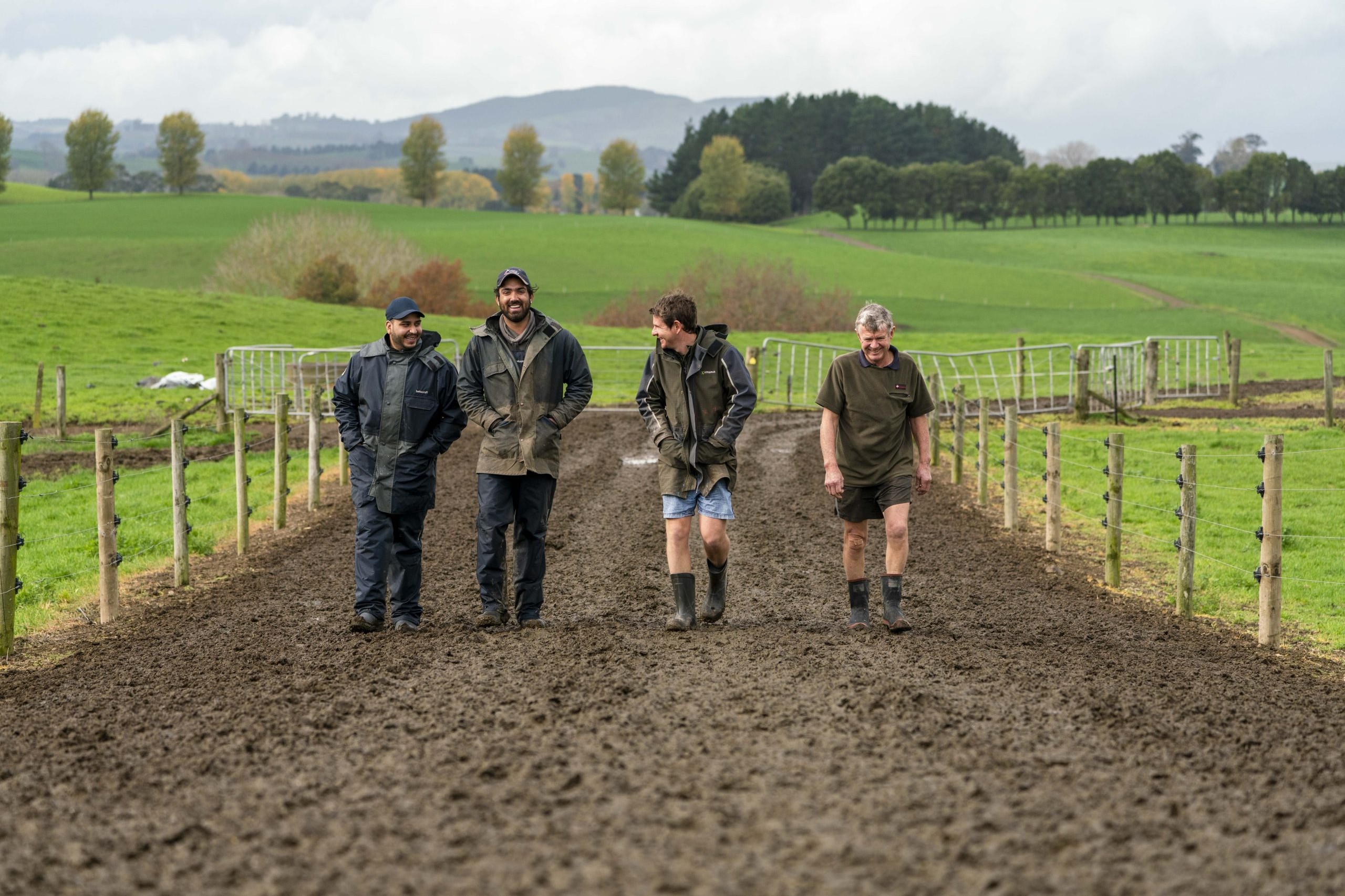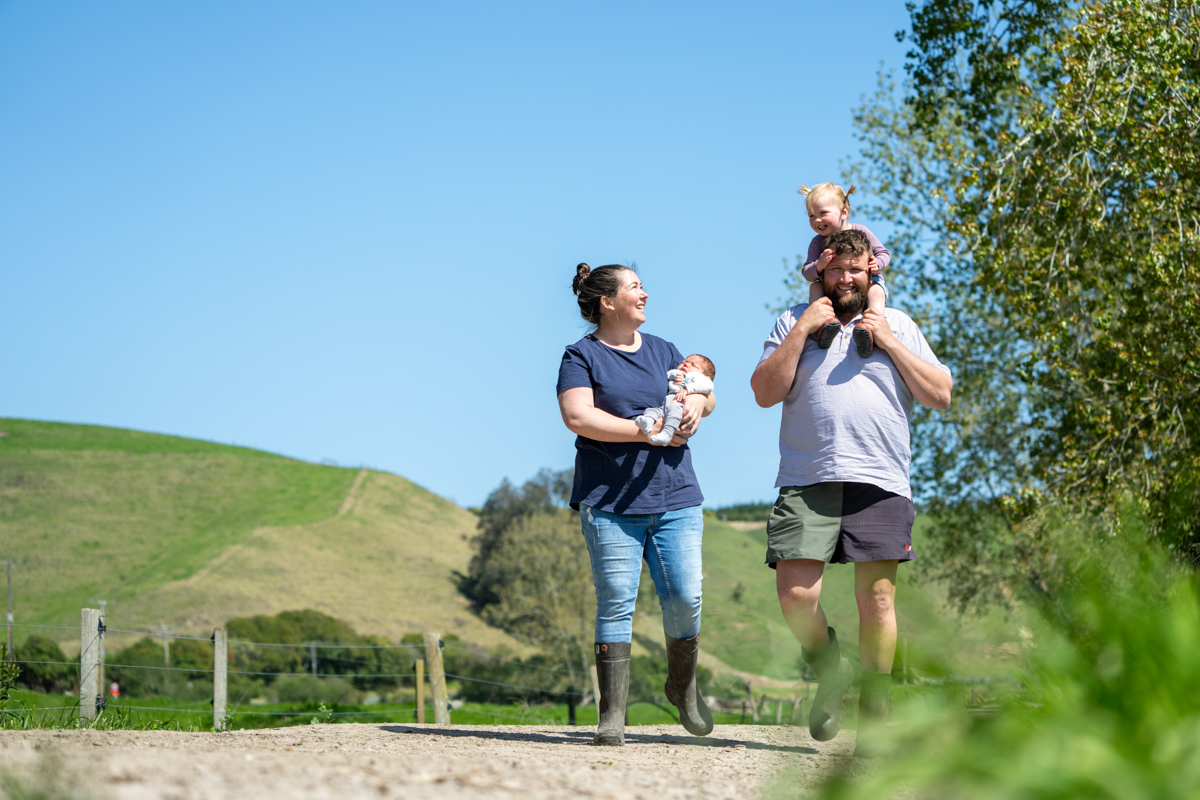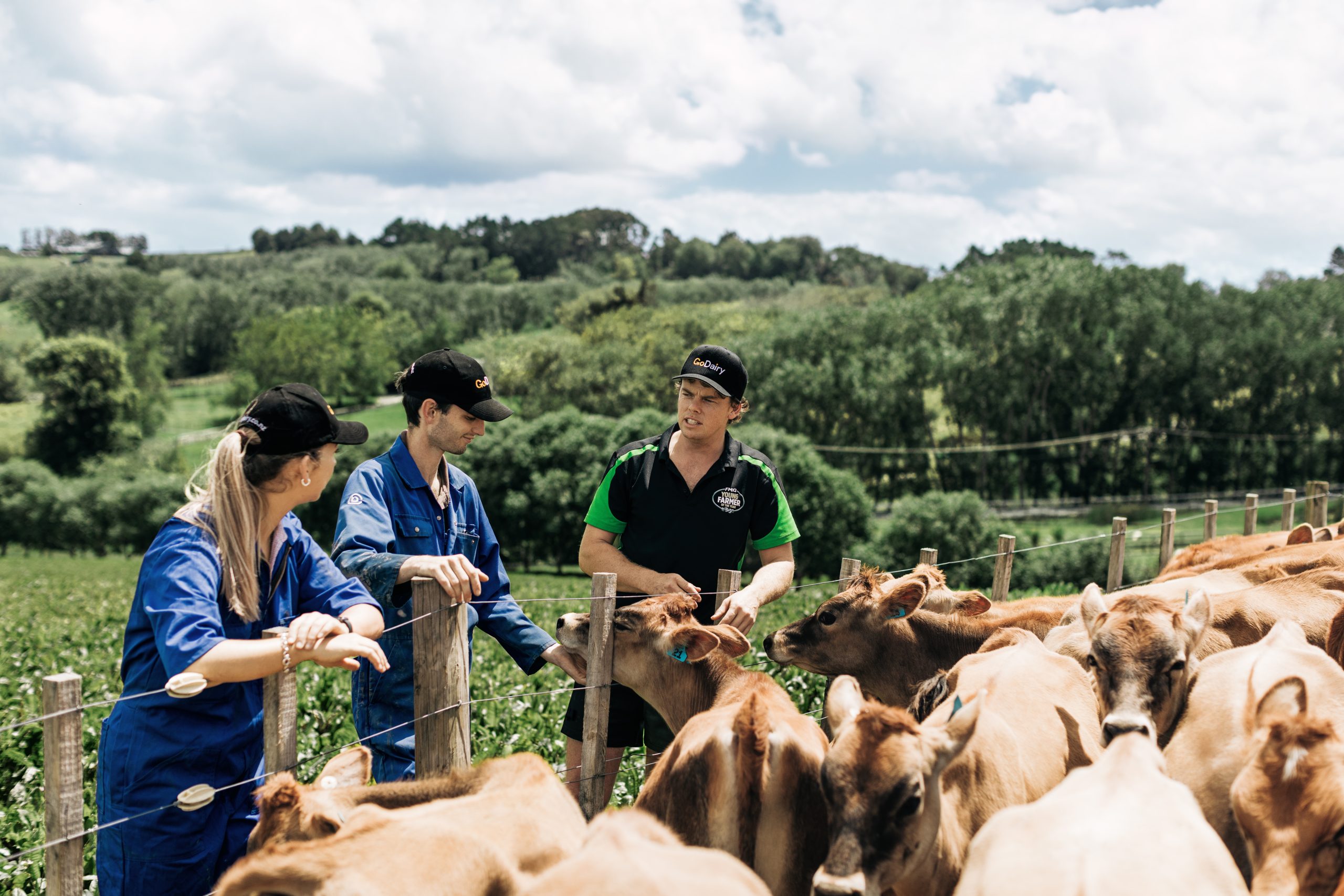After a variety of jobs, including three years milking, Richard Lumb decided to take a job driving milk tankers for Fonterra in South Otago. He’s never looked back. Photos and story by Karen Trebilcock.
It’s 6.30am in mid-September and Richard Lumb is listening to the morning briefing with the rest of the red team at Fonterra’s Stirling tanker depot near Balclutha.
As the others head off on their runs, it’s his tanker’s turn for a CIP, a clean in place, so he’s driving across the road to the Stirling plant.
Each tank has a CIP scheduled every 24 hours and it’s a hot chemical wash inside the tanks and a wash on the outside, not that the outside of the tanker will stay clean. Ahead of it is a day and night of wet roads and tanker tracks and there is a fresh coating of snow on the hills.
Richard shares the truck with a member of each of the blue and green teams.

“We work three days starting at 6.30 if it’s mornings, then three nights starting at 5pm and then three days off so it’s a nine-day roster.
“On days you work about nine hours and drive up to 500km and nights are usually about 10 hours or a bit more and you’re driving up to 650km.
“The other two guys who I share this truck with are really good. We all keep it clean and look after it.”
And his family don’t mind the roster, especially as dad is often around to help out with sports, cook tea and do some reno on the house.
“I can’t be there every Saturday for sport but I can be there for most of them. When I started with Fonterra in 2018 the kids suddenly noticed I was around a lot more.”
His kids and wife have all been on a run with him. Fonterra has two days every year when family or friends can ride in the cab. As well there are those long winter breaks.
“We work a set amount of hours each year so when our hours run out we stop work. If you do covers for other drivers or call backs then you get your hours done quicker.”
As well they get to know the others on their team.
“We see each other at the briefing at the start of the day and then all the tankers we see on the road are from red team whether they’re from Edendale or Stirling.
“And when we have days off, we’re all having the same days off so you can catch up with your co-workers away from work.”
But now, with an empty tanker, he’s heading for his first dairy farm on Webb Road at Waipahi about 50km away.
Empty tankers have their own dangers, just the same as full ones and it’s why Fonterra prefer drivers to come to the job with experience of live loads.
“A live load is stock or liquid, something that moves around. It’s easier to tip over with a live load. Driving with an empty tanker is a lot different to driving a full one. When you brake with milk on board you can feel the wave of the milk coming forward.
“And when you’re empty you’ve got to watch you don’t lose traction going uphill.”
The trucks are replaced about every five years, are automatic and their engines are limited to 90km/h.
“Even if I put my foot to the floor it will only go 90 on the flat. If I’m going downhill it’s different of course.”
But the trucks are GPS tracked and if he’s going too fast down a hill, or braking heavily or turning too sharply, he gets a call to make sure everything’s okay.
All the information, including the route, is on the Incab display mounted on the cab’s floor to his left.
“I just follow the blue line on it.”
The Incab also shows his fuel consumption and Fonterra aims to reduce fuel burn every season.
Richard is at his first pickup.
There’s no one around and he drives up to the vat, gets out, hooks up the hose to the vat and starts the process, getting three pottles ready for sampling. As the engine revs increase the milk flow, Richard walks around the truck making sure everything is as it should be and giving the tyres a thump with a hammer.
After about 10 minutes, at 1000 litres to go, he opens the door of the vat to make sure the agitator is going round. Then all finished, he unhooks, makes sure the filter in the pickup hose is clean, sets the vat rinse going and takes the docket printed at the tanker and leaves it by the vat controls.
This is where the dogs on farms, and the odd cat, show up, especially at night.
“They want a pat usually. The odd dog turns up, especially the old ones. I’ll think, where did it go and I’ll check under the tanker before I drive off.
“The kids on the farms are great. They love seeing the tanker. I’ve never had any problems. If they are around the tanker, they’re always holding on to mum.”
When leaving each farm he can add a note on the Incab about potholes needing to be filled, if there is a dead cow by the dairy or anything else not as it should be.
“I don’t do the pothole one a lot, especially during calving and mating because I know everyone is really busy but if you spend 10 hours a day or more getting shaken around because of potholes you really feel it afterwards.”
And if there is something seriously wrong he can ring Hamilton.
“Making sure everything is okay on the farm is really important for Fonterra and if we can help, or get help to someone, we do it.”
With the truck GPS-tracked, he just has to hit a button and emergency services can be called to the co-ordinates of the truck.
As well, drivers are trained in first aid and using a fire extinguisher.
“I haven’t come across a car accident yet while working for Fonterra. Seen lots of wrecks but never come across one that’s just happened.”
He’s off to Kaihiku Church Road, 35km away near Waiwera.
With volumes changing day to day, especially in the spring, the route is always different, determined by Fonterra in Hamilton and their computer algorithms.
“No two days are ever the same. You go places you would never go otherwise. It’s been an awesome way to see the South Island.”
From Northland, Richard trained as a cabinet maker and then went building but, after the Global Financial Crisis, decided to listen to his wife who had grown up on a dairy farm, and the couple and their young family went milking near Waipu for three years.
“I started green and ended up as herd manager but to take that next step, it was the $8 payout year, we just didn’t feel comfortable with the debt we would need.”
Instead he went back to his first love – driving.
“I had someone ask me when I was younger what I wanted to do and I said I’ve always wanted to drive milk tankers and he said only dropouts became truck drivers so I didn’t do it.
“I shouldn’t have listened to him.”
He worked doing forestry roading and other trucking jobs then decided a move south, to Balclutha at the other end of the country, might work and his family haven’t looked back.
“It’s hard on my wife being away from her family but the kids love it down here. The weather is so much better. No humidity. When we have a nice day here it is a nice day. No wind.”
And today there are thousands of lambs being born all along his route.
“Sheep on the road is the worst hazard. There are crazy drivers and in lockdown it’s been great to have the roads empty. But the sheep. They’ll be sitting by a fence and you think they’re going to stay put and then at the last minute…”
On the way to this farm is a narrow gravel road.
“This is the worst sort of weather, when it’s wet. When it’s dry you can see the dust of oncoming vehicles for miles sitting up so high.
“And at night you can see the headlights coming towards you. On a day like today you just go slow and make sure you are as far left as you can be on the crest of the hills.”
He pulls into the roundabout by the dairy, stops and climbs down.
The second farm’s information comes up on the truck’s exterior display panel, collecting data from the vat’s Halo system, showing the temperature of the milk and the expected volume.
With the truck’s tank filled, the milk is automatically diverted into the trailer, the valves at the top of each opening and closing.
All finished, it’s mid-morning and time to head the remaining 25km to Stirling with a full load.
Breaking up the day-to-day routine of collecting milk from farms are commodity runs to either Edendale or Clandeboye. Stirling produces cheese so the parts of the milk that are not used in the process, such as lactose or cream, head to other manufacturing sites.
Richard believes he’s found the job for the rest of his life and if he can’t drive anymore for whatever reason, he would consider a job in the dairy factory.
“Fonterra is really good to work for. Great super scheme, medical, everything. Great people you’re working with.”
The systems in place make it easy as well. Each run makes sure the driver has their minimum 30-minute break after every five and a half hours driving and doesn’t go over the legal limit of 14 hours of driving per day. As well there are no worries of the truck being overweight.
Every year an assessor sits in the cab with each driver to make sure they’re doing everything right – their driving and pickups.
Pulling into Stirling the tanker goes through an outside wash then Richard parks up by the vats.
He takes what’s known as the charm strip, which contains a sample of the load, in for testing for penicillin and other inhibitors. It takes seconds and he’s good to go.
Test pottles collected at each farm go in the fridge and then it’s back outside to hook up to two vats, one for the truck and the other for the trailer.
In eight to 12 minutes he’s empty again and back on the road.





